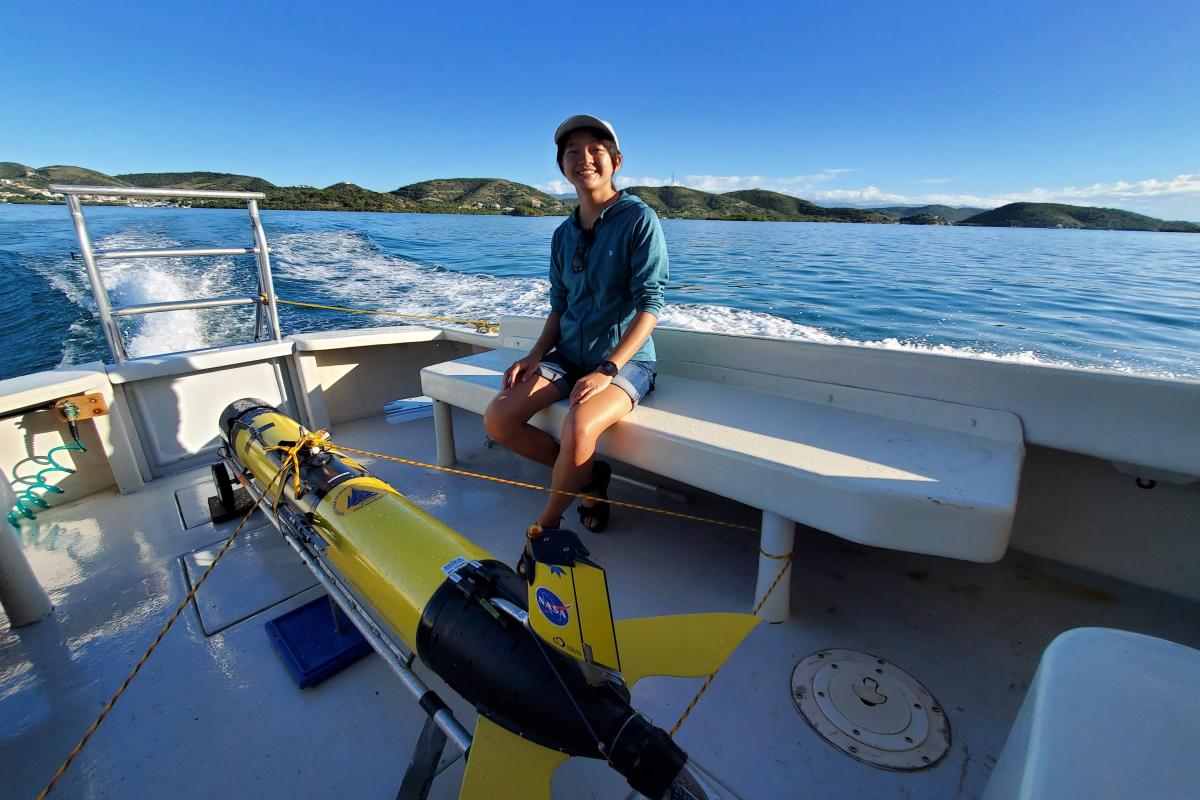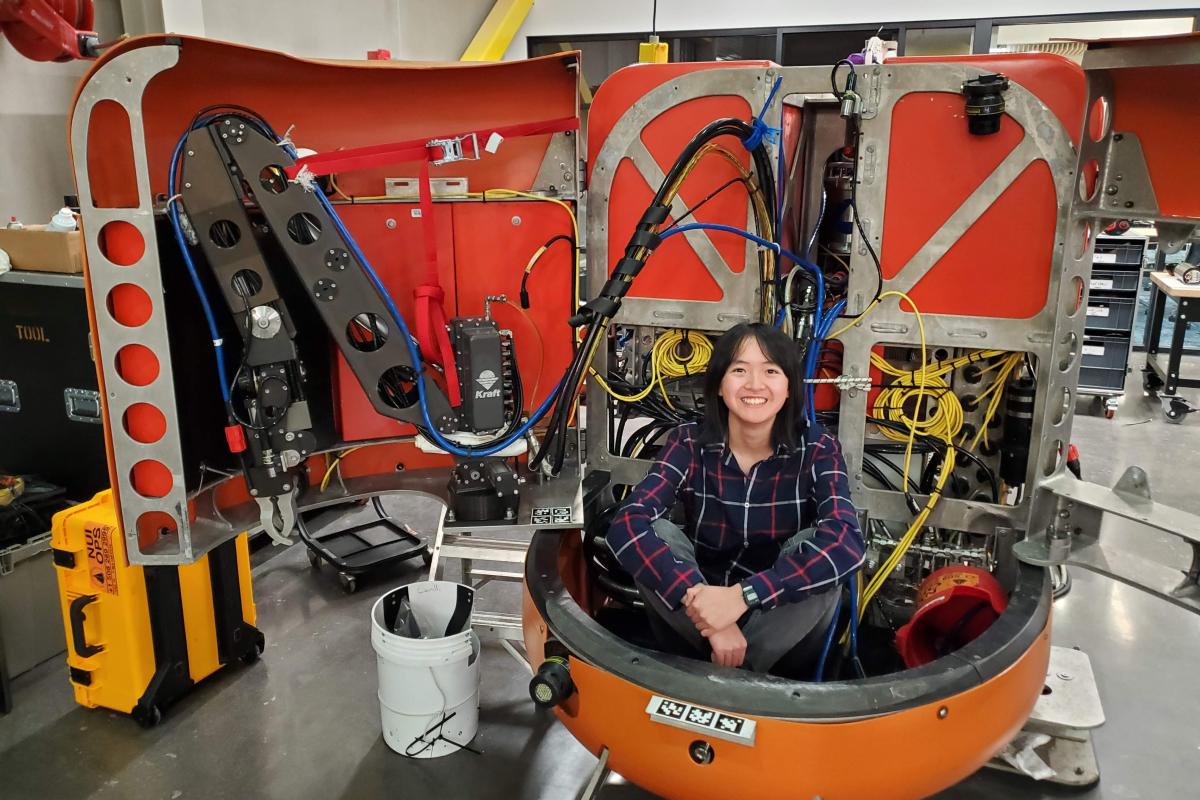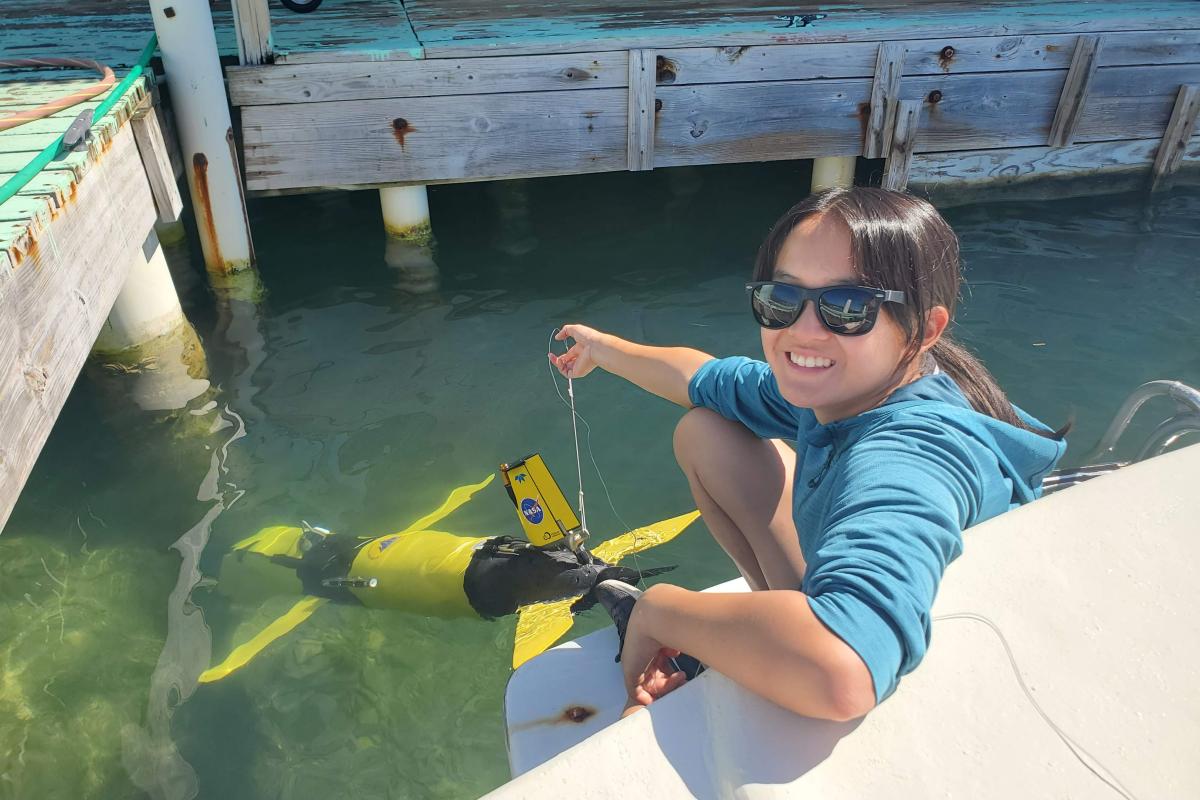STORY: Exploring Earth’s Final Frontier: The Ocean
Amy Phung ’21 is enabling better and more efficient exploration of the deep sea using ROVs.
Amy Phung ’21 is using her expertise in engineering and robotics to increase access to and knowledge of one of the world’s most mysterious environments—the world ocean.
Phung is currently enrolled in the MIT-WHOI Joint Program in Oceanography/Applied Ocean Science and Engineering, where she has completed her master’s work on enabling better remote underwater exploration through shared autonomy between human pilots and robots.
Phung’s interest in exploring unknown lands started in the 4th grade after visiting NASA’s Jet Propulsion Laboratory, where she got to see Spirit and Opportunity, the twin rovers that went on to explore Mars. “Seeing those rovers inspired me to dream of working on space exploration robots when I grew up,” remembers Phung.
While at Olin, Phung’s taste for discovery developed a new facet during her SCOPE project. She worked with the Monterey Bay Aquarium Research Institute (MBARI) to design a virtual reality system to help remotely operated vehicle (ROV) pilots.

My SCOPE project at MBARI was really helpful because in human-occupied submersibles, the pilots can see in 3D; in ROVs, they have to see in 2D, making it much harder to have depth perception
It was already so cool to be able to test our system in a water tank—I thought it would be even cooler to explore like that in the deep sea.
Amy Phung
Class of 2021
When she began at WHOI, Phung began working with her advisor to develop a shared autonomy system to enable remote operations with robotic manipulator arms on ROVs. These vehicles are used in the field on everything from scientific sample collection to underwater maintenance on oil and gas platforms to Unexploded Ordnance (UXO) remediation—the safe removal of volatile items such as discarded military munitions.
“In undersea exploration, cameras are used on robotic arms for underwater manipulation because we know a lot about using them in factories and other settings,” says Phung. “One of the bottlenecks of this solution is that it can be difficult to see in turbid or cloudy conditions when particulate gets into the water—it takes a highly trained human pilot to do that, and robots often can’t keep up.”
Phung’s proposed solution is to explore using sonar instead. By imaging the oceanic workspace with acoustics instead of light, there is the potential to give the robot a sense of where it’s operating without visual obstructions. Phung recently received funding from WHOI’s Ocean Ventures Fund to continue this research in her PhD.
Sonar could also be used to improve the navigation on the robotic gliders Phung has been focusing on recently.

Amy Phung '21 at WHOI with the Nereid Under Ice (NUI) vehicle that was used to field test her masters work in California.
“These gliders are like a hybrid between a traditional glider that uses a buoyancy drive to move through the ocean and autonomous underwater vehicles (AUVs), which rely on thrusters,” says Phung. “This combination gives it more endurance than a typical AUV and more flight patterns than a typical glider. With an imaging sonar, we could improve their navigational capabilities so we can operate them in closer quarters within the ocean—which is typically where the more interesting stuff is.”
Phung and her team are embarking on an 18-day trip to test out these amped-up gliders in Prudhoe Bay, Alaska, where they will collect standard ocean data such as conductivity, temperature, and depth. She also hopes to use imaging sonar data from the ocean floor below to improve navigation, as well as take measurements from the sea ice above so researchers can study its thickness, porosity, and other indicators of how Arctic ice is doing amidst climate change.
When she thinks about the future of underwater ROVs, Phung sees them as potentially having an impact on the broader understanding of and interest in protecting this invaluable resource.
“If we have more data about the ocean and can disseminate it to the public, people could get better access to images of this new world, the same way NASA images of deep space are being used now,” says Phung. “People care a lot about space, but there are so many weird and cool things in the ocean, beyond what any sci-fi movie can dream up. I’d love to be a part of helping to increase ocean literacy for the broader public.”

Phung and her team tested out this underwater glider during recent fieldwork in Puerto Rico.